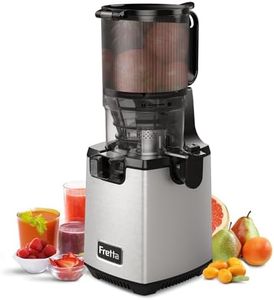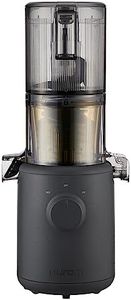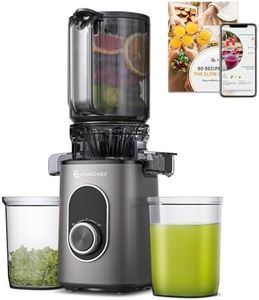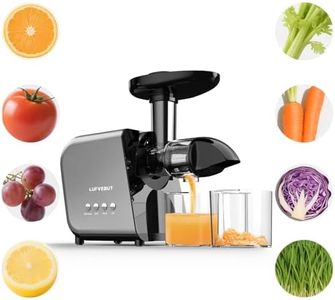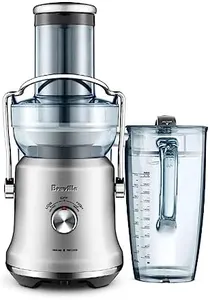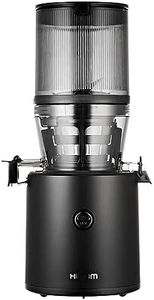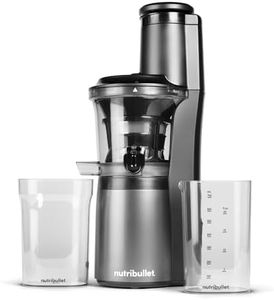We Use CookiesWe use cookies to enhance the security, performance,
functionality and for analytical and promotional activities. By continuing to browse this site you
are agreeing to our privacy policy
10 Best Cold Press Juicer Machine
From leading brands and best sellers available on the web.Buying Guide for the Best Cold Press Juicer Machine
Choosing the right cold-press juicer machine can be a bit overwhelming given the options available, but understanding the basics will help you make the best choice for your needs. Cold-press juicers, also known as masticating juicers, work by slowly crushing fruits and vegetables to extract juice, which helps retain more nutrients and enzymes. Your perfect juicer will depend on how much juice you want to make, what types of produce you intend to use, and how convenient you want the whole process to be. By focusing on the key specifications, you can narrow down your options and find a juicer that fits your lifestyle and juicing habits.Juicing Speed (RPM)Juicing speed, measured in rotations per minute (RPM), indicates how fast the juicer’s auger spins to crush produce. Lower RPMs (generally below 100) are gentler on fruits and vegetables, which means less heat and oxidation and more nutrients preserved in your juice. Higher RPMs (usually between 100-200) can extract juice faster but might lead to more foam and a shorter shelf life for your juice. If you prioritize nutrient-dense juice and don't mind waiting a bit longer, go for low RPM. If speed is more important for your busy mornings, a slightly higher RPM might suit you better.
Feed Chute SizeThe feed chute is the opening where you add fruits and vegetables. Wide feed chutes allow you to juice whole apples or large pieces, which reduces prep time. Standard or narrow feed chutes mean you need to cut your produce smaller, but this can be beneficial for certain types of juicers that handle smaller chunks more efficiently. If you want convenience and have limited time for prep, a wide feed chute is very helpful. If you're okay with some extra prep or want a more compact machine, a narrower chute works too.
Ease of CleaningEase of cleaning covers how many parts need to be washed and whether those parts are dishwasher safe. Juicers with fewer, larger parts are often easier to clean, while models with complex strainers and components can be more time-consuming to maintain. Some juicers even come with specialized cleaning brushes. If you plan to use your juicer daily and want minimal hassle, prioritize models known for quick cleanup. If you don’t mind spending a bit longer washing parts for a better or more versatile juicing experience, cleaning might be less of a concern.
Juice Yield and Pulp DrynessJuice yield refers to how much juice you get from a given amount of produce, and pulp dryness is a good indicator of efficiency—the drier the pulp, the more juice you get. Some juicers are better at extracting juice from leafy greens, while others excel at harder fruits and veggies. Think about what you'll juice most often: if you want to maximize every leaf of spinach or kale, look for high-yield models known for dry pulp. If you mostly juice fruits or softer produce, most masticating juicers will do the trick.
Noise LevelCold-press juicers are generally quieter than high-speed centrifugal juicers, but some are still quieter than others. If you're planning to juice early in the morning or in a shared living space, picking a quieter model can make a real difference. Noise levels can range from a soft hum to a noticeable buzz. Think about where and when you'll be using your juicer, and if low noise is important, look for machines specifically marketed as quiet.
Size and StorageThe overall size of the juicer and how much counter or storage space it takes up can be important for your kitchen setup. Some cold-press juicers are tall and need more vertical space, while others are longer but lower in height. Consider where you plan to keep the juicer and how often you'll want to move it; compact models are easier to store or relocate, but may have smaller capacity, while larger models can handle more produce in one go at the expense of more space.




